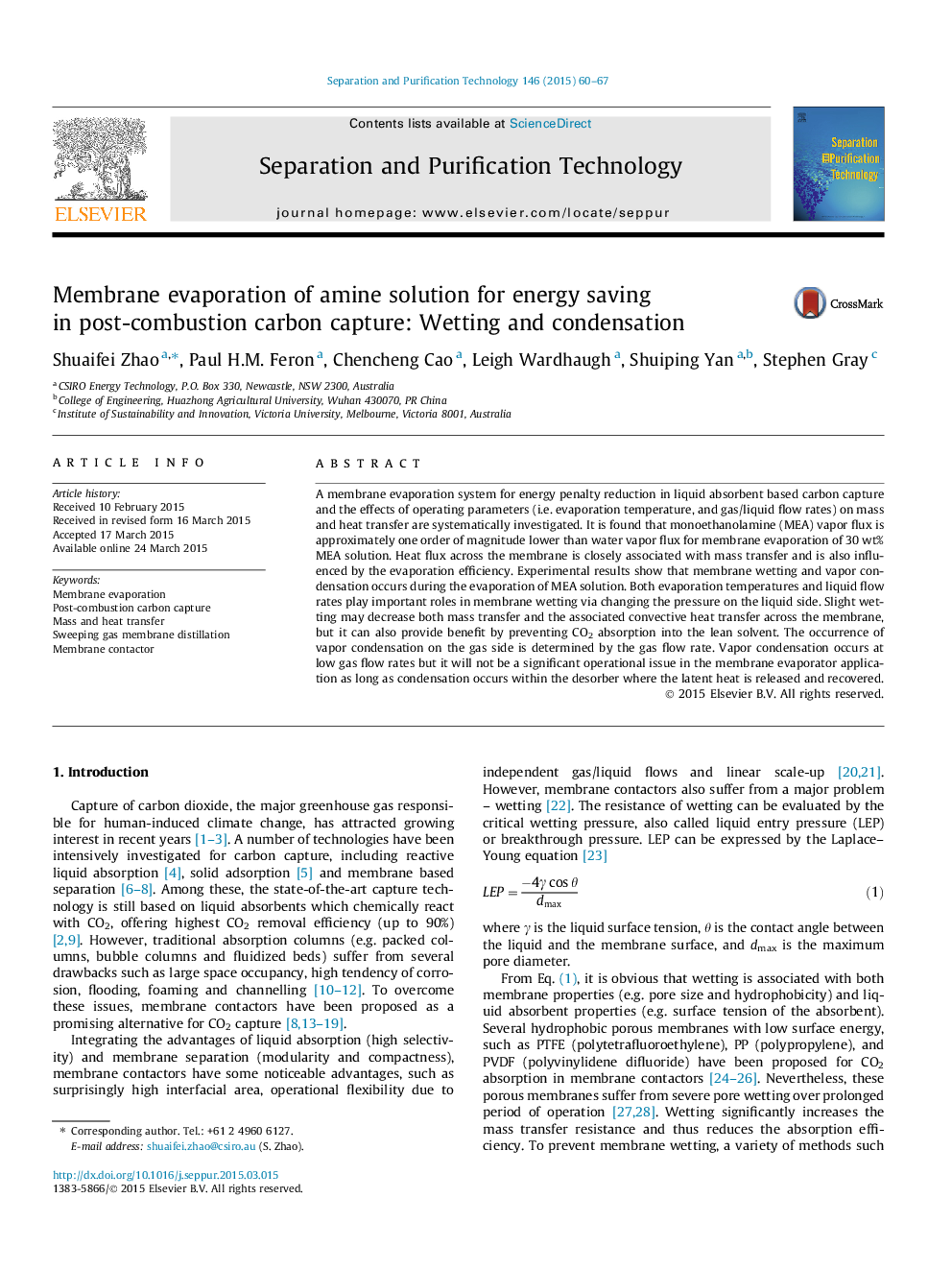| کد مقاله | کد نشریه | سال انتشار | مقاله انگلیسی | نسخه تمام متن |
|---|---|---|---|---|
| 640704 | 1456973 | 2015 | 8 صفحه PDF | دانلود رایگان |
• A membrane evaporation system for energy saving in carbon capture is proposed.
• Membrane evaporation of amine solutions is carried out.
• Amine vapor flux across membrane can be negligible compared with water vapor flux.
• Membrane wetting and vapor condensation occurs in amine evaporation.
• High temperature and liquid flow cause wetting via increasing liquid side pressure.
A membrane evaporation system for energy penalty reduction in liquid absorbent based carbon capture and the effects of operating parameters (i.e. evaporation temperature, and gas/liquid flow rates) on mass and heat transfer are systematically investigated. It is found that monoethanolamine (MEA) vapor flux is approximately one order of magnitude lower than water vapor flux for membrane evaporation of 30 wt% MEA solution. Heat flux across the membrane is closely associated with mass transfer and is also influenced by the evaporation efficiency. Experimental results show that membrane wetting and vapor condensation occurs during the evaporation of MEA solution. Both evaporation temperatures and liquid flow rates play important roles in membrane wetting via changing the pressure on the liquid side. Slight wetting may decrease both mass transfer and the associated convective heat transfer across the membrane, but it can also provide benefit by preventing CO2 absorption into the lean solvent. The occurrence of vapor condensation on the gas side is determined by the gas flow rate. Vapor condensation occurs at low gas flow rates but it will not be a significant operational issue in the membrane evaporator application as long as condensation occurs within the desorber where the latent heat is released and recovered.
Figure optionsDownload as PowerPoint slide
Journal: Separation and Purification Technology - Volume 146, 26 May 2015, Pages 60–67
